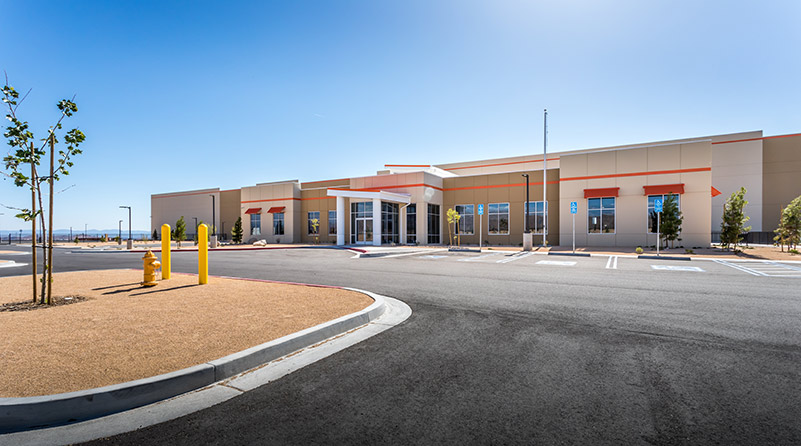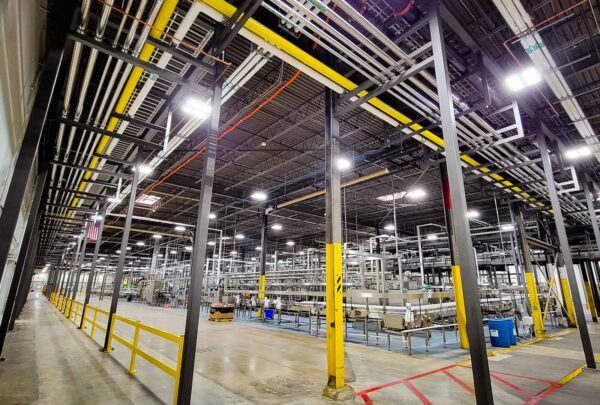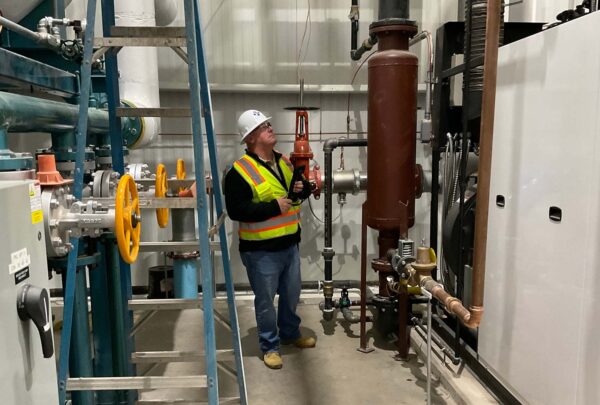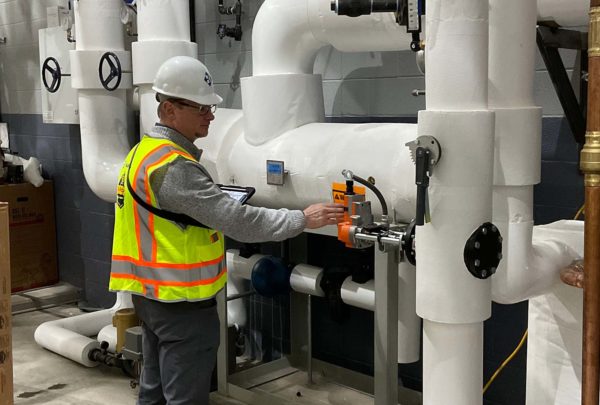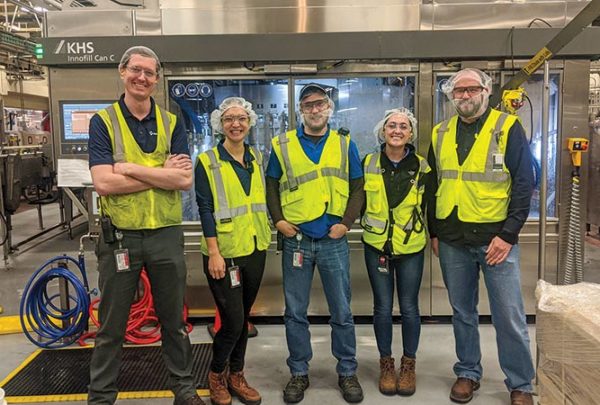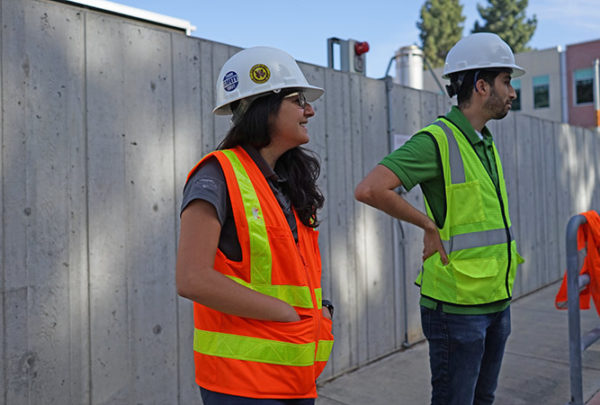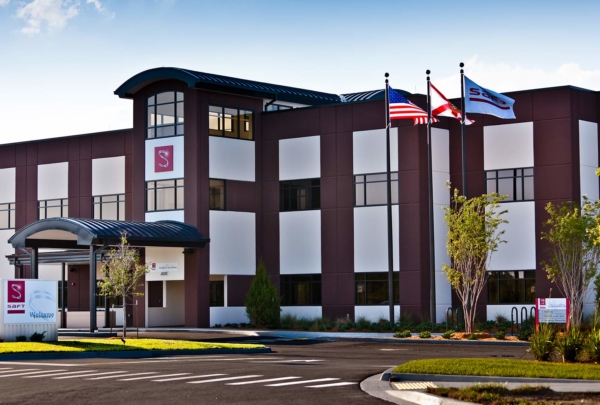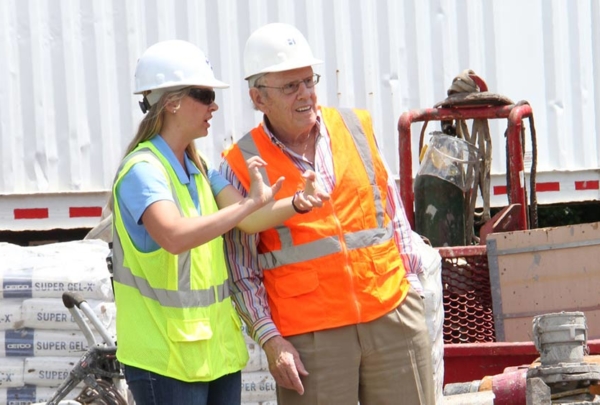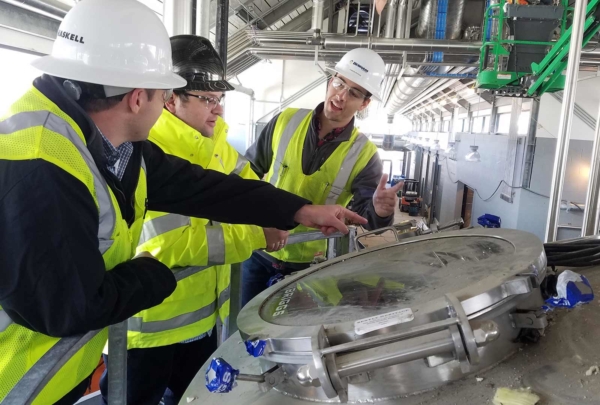As the first boots on the ground on any new-build project, Haskell’s in-house civil-site engineers give clients an accelerated start on achieving an accurate, cost-effective design and certainty of outcome.
Haskell’s integrated design-build model enables civil-site engineers’ prompt involvement.
“We have a sense of early arrival into the project to help partner with the customer and permitting agencies to fast-track the schedule and get a real jumpstart on the overall design,” said Kevin Crump, Chief Civil Engineer.
Early deployment of civil-site engineering resources saves time and money and helps prevent surprises in the future about site development complexities and associated cost.
Haskell’s engineers work closely with customers to understand their unique site needs, such as special considerations for utility demands, parking, trucking aprons, docks, and support buildings.
Then, to support the facility’s function, the team develops the overall site plan in partnership with the architect.
Civil-site engineers are responsible for engineering the land around the building. This includes the grading, careful management of storm water, utilities, and the associated infrastructure.
Every project starts with a design-development phase, in which civil-site engineers meet with local authorities like the city engineer, planning and zoning staff and wastewater authority.
“We digest their requirements and boil it down into a permitting matrix to educate the project team,” said Crump.
In order to secure permits, Haskell’s engineers must produce a geometric layout of the site plan, grading and elevation schemes, erosion control documents, construction documents and integration with site utilities.
There is also coordination with other engineers. The structural team needs to know the exterior grades so it can design the foundations. Civil engineers work with mechanical engineers on the placement of central energy plants and with plumbing engineers to connect utilities.
After obtaining permits, construction can begin.
“A lot of civil engineers aren’t involved in construction,” Crump said. “We’re able to partner with the construction team to assure a smooth delivery. This is unique to Haskell.”
Crump cites “Project Jupiter” as an example of Haskell’s ability to deliver speed-to-market.
Project Jupiter was a 1.2 million-square-foot distribution center in Southern California. Because it has an integrated civil team, Haskell was able to deploy an engineer to California to work out a vast number of permits, many of which were environmentally complex.
In addition to navigating environmental matters, such as endangered species and protected lands, engineers had to perform a ground-sifting procedure on what was once a World War II bombing range to remove unexploded ordinance.
The permitting process took two years, but it could have taken longer with a third-party civil engineer.
“Having an in-house civil engineer allowed the owner transparency,” Crump said. “There was a full understanding of what fiscal resources it was going to take to successfully achieve a permit just to start construction.”
Haskell’s civil-site engineers must stay abreast of ever-evolving trends, both in environmental consciousness and design software.
Environmentally conscious design has increased over the past five years, Crump said. There are many proprietary products designed to filter out contaminants underground to reduce the pollutants in stormwater. Some of these include separator or vortex units that use circular flow to set apart particulates in the runoff.
3D design software is another area of continued innovation. Instead of drawing two-dimensional designs with red pencils, hand calculators and 45-degree templates as they did 10 years ago, engineers now accelerate execution with computer modeling.
Crump credits STEM education (science, technology, engineering and mathematics) for equipping young engineers with technical ability, which is a benefit to the industry.
“They’ve grown up in the digital era, where they’re very comfortable with technology and software,” he said. “There’s a trend where we’re getting a greater interest from students with more technical aptitude. I’m excited about the new generation of engineers.”
